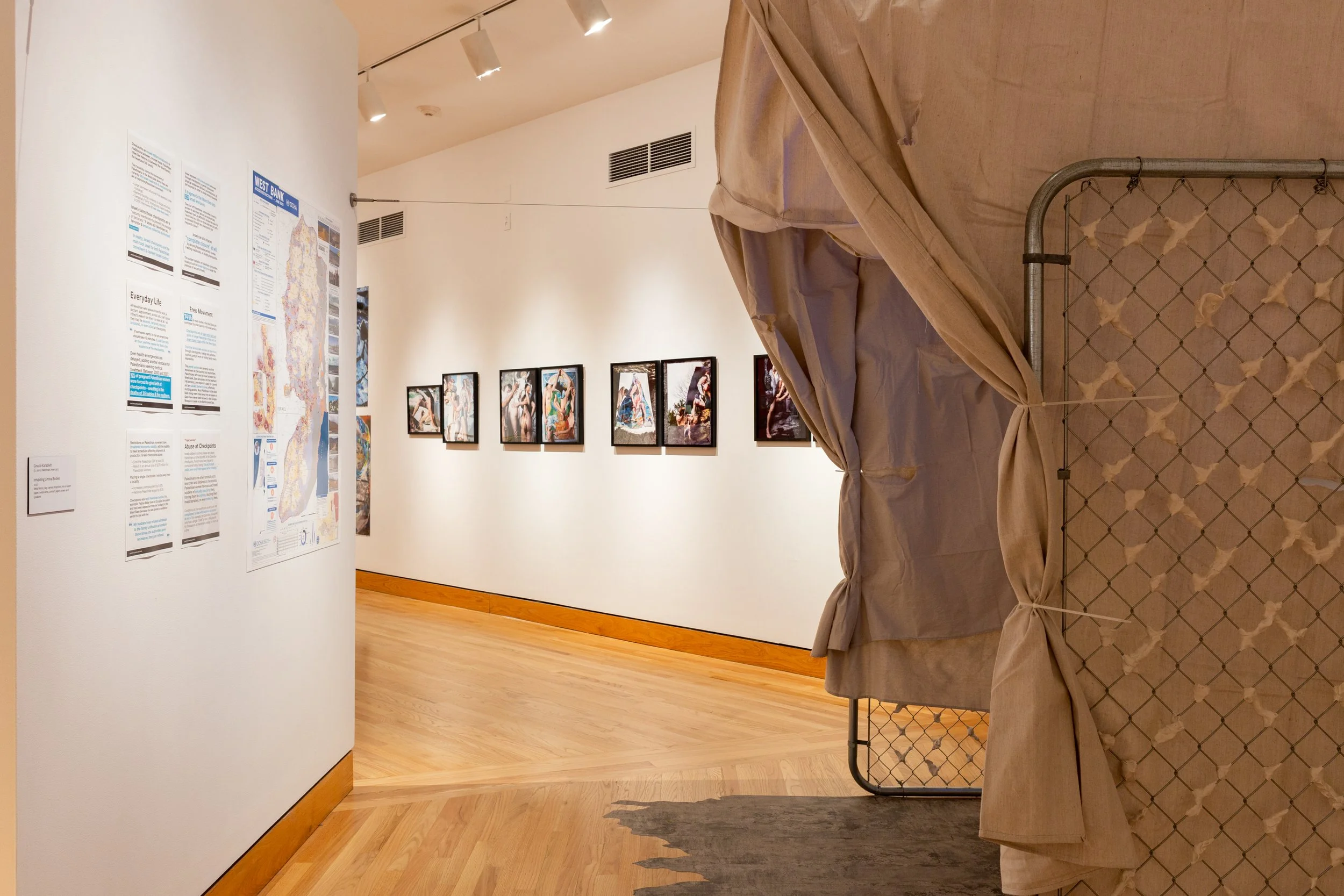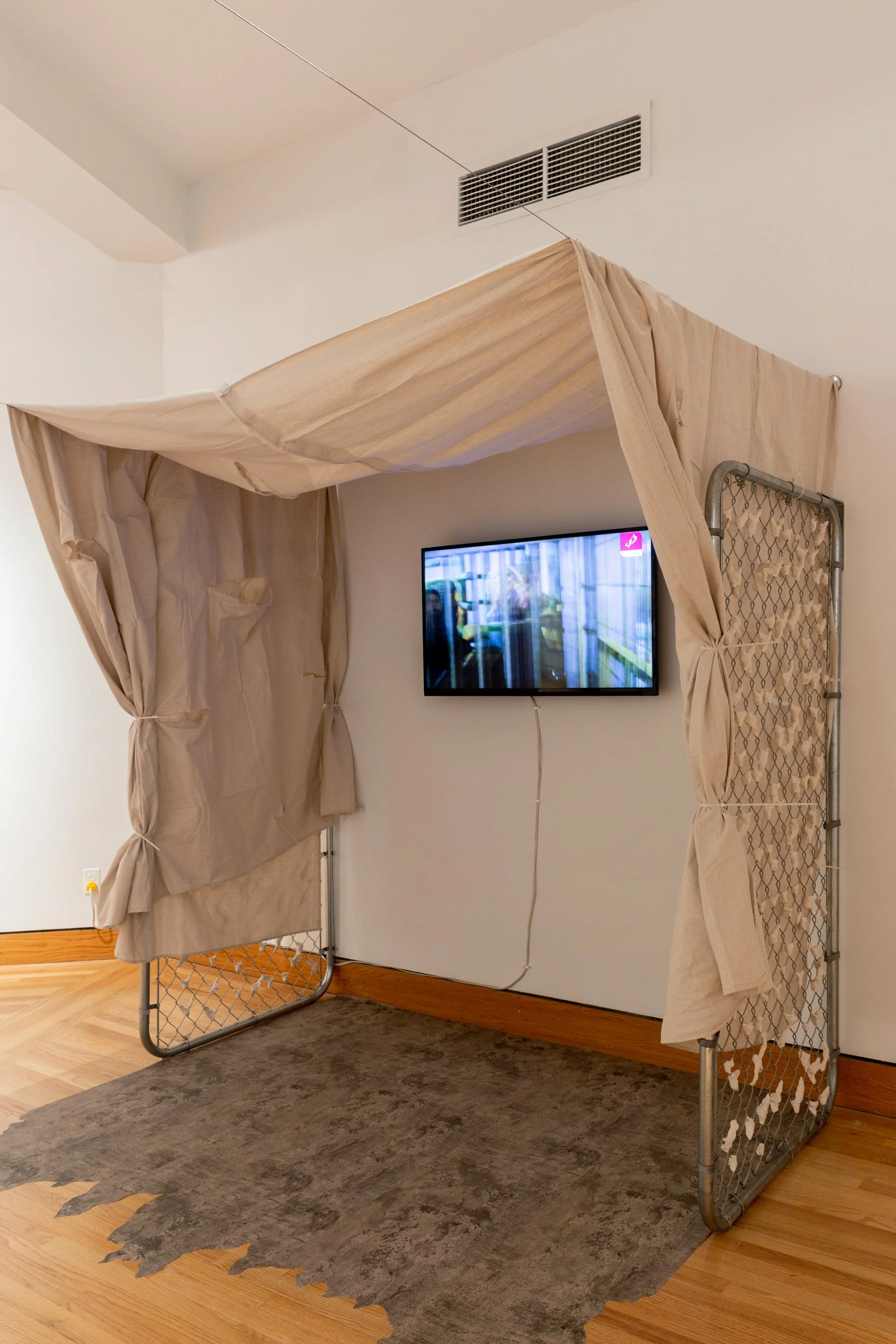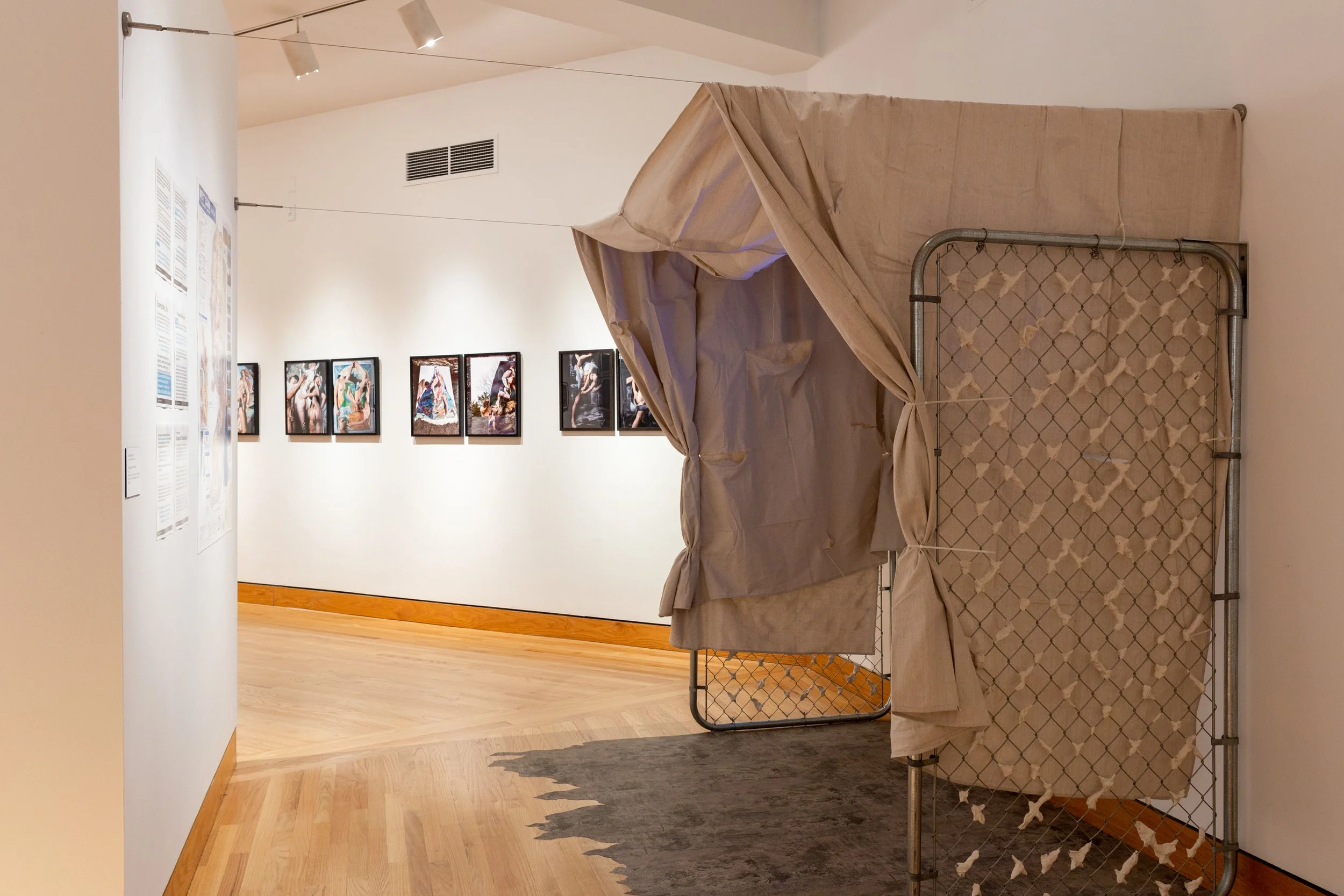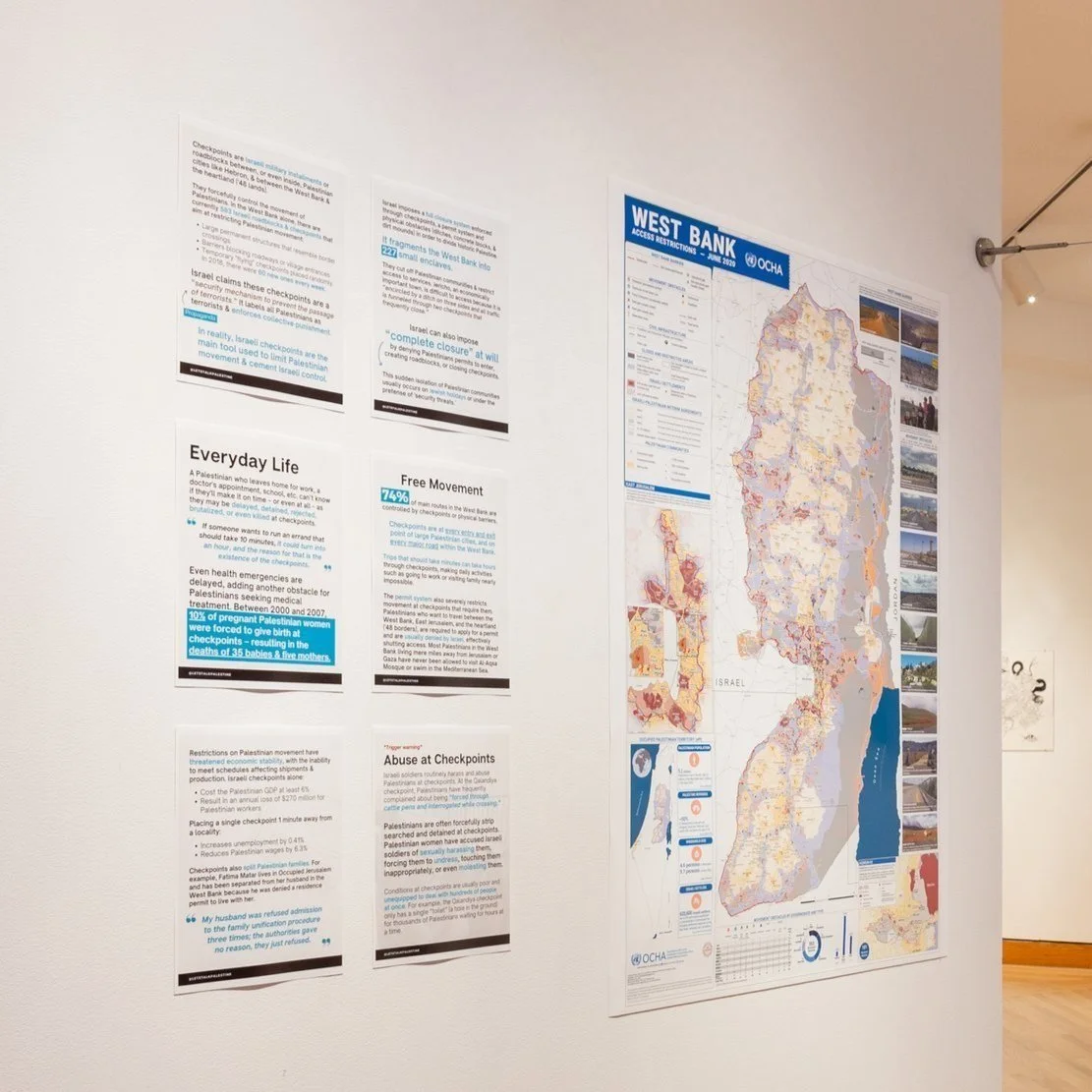Inhabiting Liminal Bodies
An Installation at the Williams College Museum of Art
Materials: Metal fence, clay, canvas dropcloth, ink on luster paper, metal wires, contact paper, screen & speakers
As a Palestinian artist, I am deeply drawn to themes of identity, freedom, self-determination, and access. In response to my own experiences under occupation and with a rare tumor on my left arm, I aim to create a work that reflects these intersecting obstacles by recreating an impression of an Israeli checkpoint. As a structure of oppression that native Palestinians are all too familiar with, checkpoints represent a suffocating liminal space. They embody the segregation and discrimination that Palestinians have endured for decades.
For this piece, while I would have rather focused on Palestinian heritage, culture, and rich history, I feel obliged to show my community in this vulnerable state, since mainstream media isn’t showing what’s happening on the ground. In keeping that in mind, I articulate issues surrounding restrictions on movement, selective empathy, double standards, psychological distancing, and blind spots in media coverage.
Furthermore, with my tumor, I can’t help but think about how different my experience would have been if I were in Palestine having to pass through Israeli checkpoints to receive proper medical care. My lack of movement therefore encompasses both my identity as a Palestinian and my physical malady.
Israeli checkpoints rarely provide accessibility options, so it is quite ironic that one of the reasons I am not able to generate an actual checkpoint experience is for accessibility purposes. View this work as an obstacle in viewing the exhibition; a liminal space that you are forced to encounter.
Contextual information summarized (Slides of information displayed on the wall opposite to the video)
Checkpoints are Israeli military installments or roadblocks between the West Bank and the 1948 lands (modern day Israel). Israel forcefully controls the movement of Palestinians. In the West Bank alone, there are around 593 Israeli roadblocks and checkpoints.
These checkpoints are mainly:
1. Large permanent structures that resemble border crossings
2. Barriers blocking roadways or village entrances
3. Temporary “flying” checkpoints placed randomly (in 2018 there were 60 new ones every week).
Israel imposes a full closure system enforced through checkpoints, a permit system, and physical obstacles (ditches, concrete blocks, and dirt mounds) dividing historic Palestine. The system fragments the West Bank into 227 small enclaves.
Checkpoints are at every entry and exit point of large Palestinian cities, and on every major road within the West Bank where 74% of the main routes are controlled by checkpoints or physical barriers.
The permit system entails that Palestinians wanting to travel between the West Bank, East Jerusalem, and the 1948 borders are required to apply for permits which are usually denied by Israel. Effectively, Palestinians living miles from Jerusalem or Gaza are rarely –if ever– able to access these areas.
Trips that should take minutes can take hours through checkpoints, making daily activities such as going to work or visiting family nearly impossible. A palestinian leaving home for work, a doctor’s appointment, school, etc. cannot know if they’ll make it on time –or even at all– as they may be delayed, detained, rejected, brutalized, or even killed at checkpoints. Even health emergencies are delayed, adding another obstacle for Palestinians seeking medical treatment. Between year 2000 and 2007, 10% of pregnant Palestinian women were forced to give birth at checkpoints –resulting in the deaths of 35 infants and five mothers.
Palestinians often experience abuse and harassment at checkpoints by Israeli soldiers where they are often forcefully strip searched and detained. Palestinian women have also accused Israeli soldiers of sexually harassing them, forcing them to undress, touching them inappropriately, or even molesting them (briefly shown in the video piece in the installation).
Conditions at checkpoints are usually poor and unequipped to deal with hundreds of people at once. For example, Qalandiya checkpoint only has a single toilet for thousands of Palestinians to use waiting for hours at a time.
Textual description of work for vision or hearing impaired
My installation is a mock checkpoint that intends to be a liminal space in viewing the exhibition. Situated on the outer edge of the gallery, a beige canvas drop cloth creates a primitive shelter between two metal fences, each adorned with clumps of clay. On a wall inside the canvas is a monitor that plays a six-minute video of Israeli checkpoints in Palestine. On the opposite wall is a map and other information contextualizing the restrictions of movement for Palestinians.



